The Wedding of Meta Song
The Wedding of Meta Song
spoilers through the Wedding
lots of meta
lots of pics
joy!
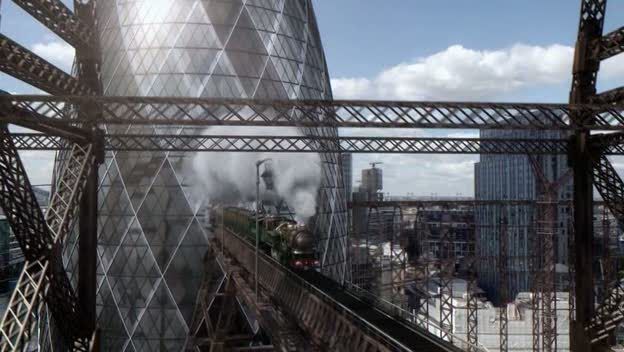
The opening sequence features a glass-mirror obelisk, from which emerges a train like the Hogwarts' Express -- and remember, the trains terminate inside the Pyramids of Egypt, so these are all glass mirror mountains, the axis mundi that connects heaven and earth, angel and beast, above and below, conscious and subconscious, self and other. And look at all the X motifs! X in the girders, X of the girders, and all those overlapping tessellated Xs in the Mirror Mountain itself. I think I'm in heaven.
This is an episode that promises movement in the quest for identity: Cars hang by balloons, and pterodactyl vermin fill the sky, and a Roman Centurion guides his Red Chariot down the street.
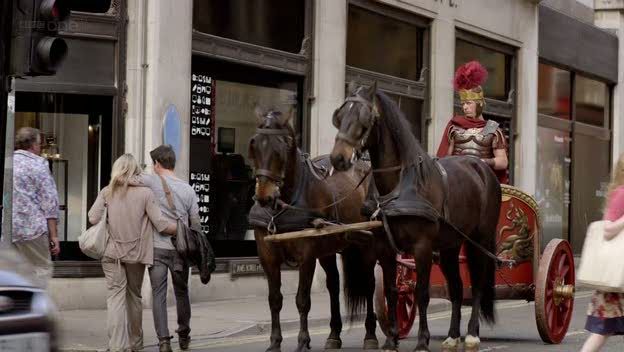
If it hasn't been made clear that we've been transported to an Other reality, it should be after Charles Dickens describes his upcoming tale, a tale of ghosts, the past, the present, and the future, all at the same time. Oh, we love a ghost story, and especially when the story has mirrors reflecting on itself -- which will be mirrored at the end, naturally.
All of reality has seemingly converged -- Americans on a British morning show, at 5:02 in the afternoon, while Emperor Churchill is tended by a Silurian doctor. Anachronism is the rule of the day, lending the whole "reality" a feeling of eternity. I'm reminded of Julie Tarmor's adaptation of Shakespeare's Titus Andronicus.
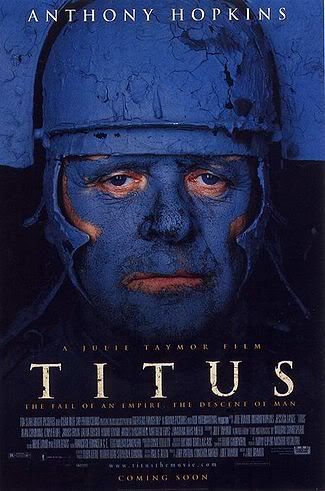
The Empire Never Ended. Caesar Churchill plays the role of the narratee, the audience surrogate, in demanding of the Soothsayer Doctor an explanation of what happened to time -- how can all of this be happening at once? How can there be time without time?
"A woman," says the Doctor.
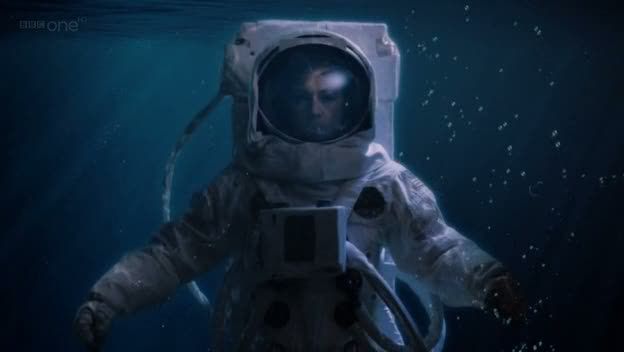
Which is exactly what the final image of the previous episode predicts. Time is a river, they say, and River is Time herself (as well as being Love and Death) suspended in the middle of still water, a giant pond named after Silence.
This episode is about the duality of Love and Death, the Great American Story. No wonder the Doctor wears a cowboy hat! But to deal with his own death, the Doctor must first become an angel of death, angel or beast, take your pick. Depends on your perspective, ultimately.
DOCTOR: Imagine you were dying. Imagine you were afraid and a long way from home, in terrible pain. Just when you thought it couldn't get any worse, you looked up and saw the face of the Devil himself."
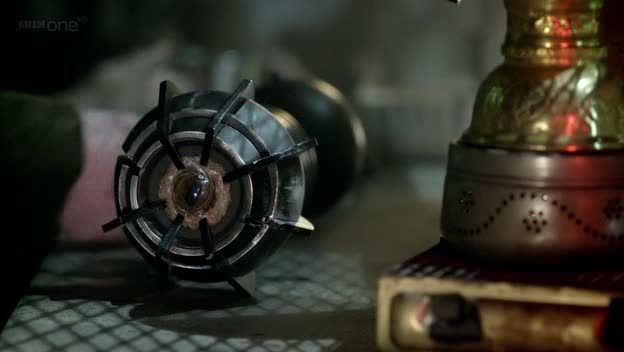
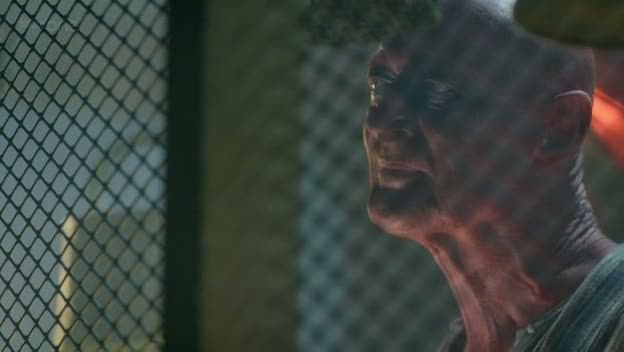
The Doctor goes to the Docks of Calisto B in search of Gideon Vandeleur, getting the information he needs by intimidating a Red Man with a Dalek's eyestalk.
Already I am in complete and total love with this episode! If the Doctor is at the docks of anywhere, he must be near a body of water -- the mirror of time. Calisto evokes the Greek myth of Callisto, a nymph of Artemis who is impregnated by a god and gives birth to the founder of Arcadia -- Arcadia becomes a symbol of the Elyssian Fields, a pastoral afterlife. This place is a mirror on the edge of death.
We get another wonderful Eye shot, the disembodied Dalek eyestalk. I love how the Red Man is behind a tessellated screen, and how he points the way to the Doctor's ultimate destination: the Mad Blue Man in a Box.
To get there, the Doctor needs to speak with Gideon Vandeleur, who wears an eyepatch and who is actually the Tessellector as the real Gideon has been dead for six months. "Vandeleur" means "the Disappointed," while "Gideon" means "destroyer," "feller of trees," and lo and behold, "Mighty Warrior." Gideon is a Biblical character, a judge in Judges. The Tessellector is a Judgment Machine, and will become a Doctor in a Doctor. Not only the character, but the fake reality pretending to be the character, are mirrors to the Doctor. Naturally, the revelation is shown through an iconic Eye shot, glowing green under the influence of the Doctor's sonic.
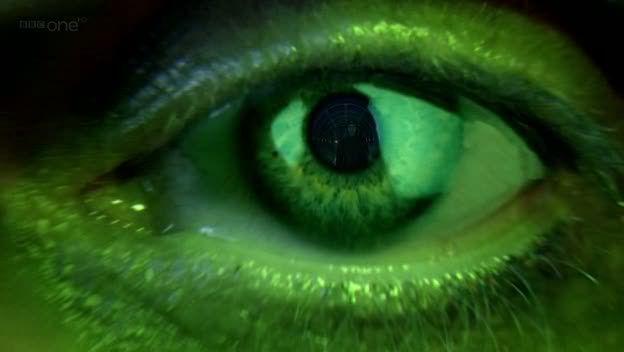
The Doctor asks Gideon!Tess about the Silence, and what he wants to know is this: What is their Weakest Link? Back in Bad Wolf, The Weakest Link was a deadly game show, and sure enough we get another deadly game show, and of course another field for metaphor: Live Chess.
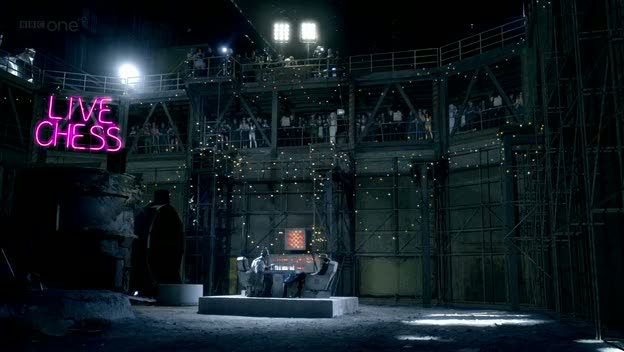
GANTOK: I am a dead man unless you concede the game.
Live Chess can kill you. Nice. Mind you, Chess is a great metaphor for how the Doctor "plays the game." He and the Silence are locked in a battle of wits, a battle that must result in the Doctor's death. They both have time travel, so like that wonderful scene in Let's Kill Hitler where the Doctor and River are trying to one-up the other, both the Doctor and the Silence can keep "going back" to change the nature of the reality being forged. Whoever can look deepest into all the layers of moves will emerge victorious.

In the audience there's a man with a sunglasses and a mohawk, and he's bearing a tattoo of a man wearing sunglasses and a mohawk. That's another visual of the Nesting Doll meme. The tattoo right above it looks like a cross between an angel and a beast. The man in black has a tattoo of two arrows running parallel but pointing in opposite directions, a metaphor for the relationship of River to her loved ones.
The Chessboard is also a great metaphor, the alternation of Black and White in a tessellated pattern, but in the Doctor's game of Live Chess,
all the pieces are made of glass. The whole game is a mirror for the larger picture.
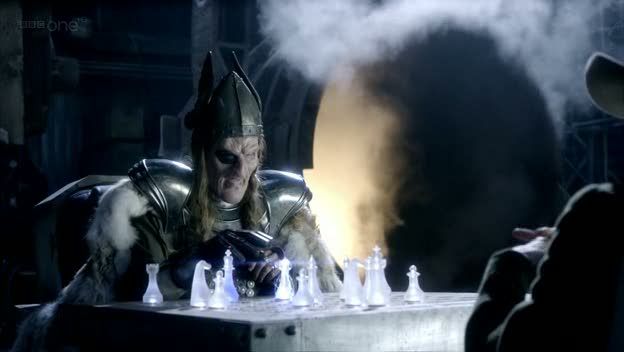
One of the metaphors of the Chess Motif is to liken the characters to certain chess pieces. The Doctor is the King, naturally, playing to win. His opponent, Gantok, is wearing a hat that resembles the Bishop, more of a fringe piece than a major one. The Doctor has been seen playing chess (i.e., playing the Chessmaster) since the Classic days, most memorably in his Long Game against Fenric, when disabusing his pawn Ace of her faith in the Doctor was a key component to victory.
Chess has a fascinating element of gameplay. The lowliest pieces, the Pawns, can be promoted to Queens if they reach the back rank. This transformation from weakest link to incredibly strong is a picture-perfect metaphor for River Song. She has been a pawn in a Long Game between the Silence and the Doctor, but has become a major player in her own right.
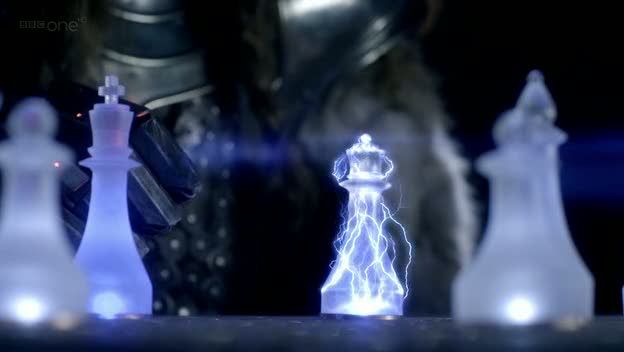
Appropriately, the Queen is electrified and Blue. She's been played too much, to the point where touching the piece one more time will kill you. Which, not coincidentally at all, is a reflection of the Sideways reality: The Doctor has to touch River in order to die, in order to "concede" the game, which is how this scene resolves, the King falling and bathed in Fire.
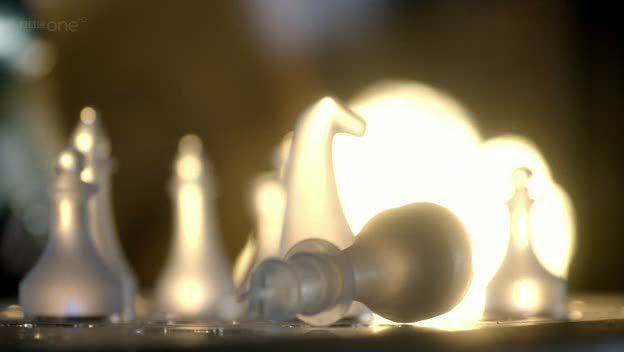
Chess is actually a common trope in film. Our heroes and villains locked in combat, but sometimes the Hero dares to play a game of chess against Death in exchange for a longer life. That particular trope is inverted or mirrored here, as the Doctor must lose the game in order to win: He must appear to be dead in order to win his life.
There's a production meta here as well: Moffat is a Chessmaster playing games with the fans. It's a "live" match, meaning that he's got to figure out some of his moves while the show is airing, adjusting his play according to the moves made by fandom and the audience.
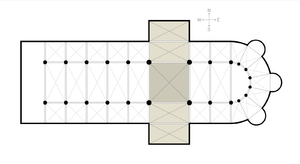
Gantok (whose name sounds like a Tibetan village frequented by Buddhist pilgrims) brings the Doctor to the Seventh Transept, where the Headless Monks keep heads. Once again, we get the recurrence of Number Seven, and we also get a great location - a location that serves as a metaphor. A "transept" is a transverse section of a building that crosses the the main corridor or body of the structure. In a cathedral, it represents the horizontal plane of the Cross.

So the Seventh Transcept is a sort of Crossroads, a place where Death is Alive. The skulls can move, eat rats, while the heads of the rich sit unmolested in their own little boxes, wired for entertainment. Revelation of the Daleks, anyone? Anyone? It is in this place of Death that is crossed with Life that the Doctor will find what he needs to know in order to successfully mix Life and Death in his own Life, his own Death.
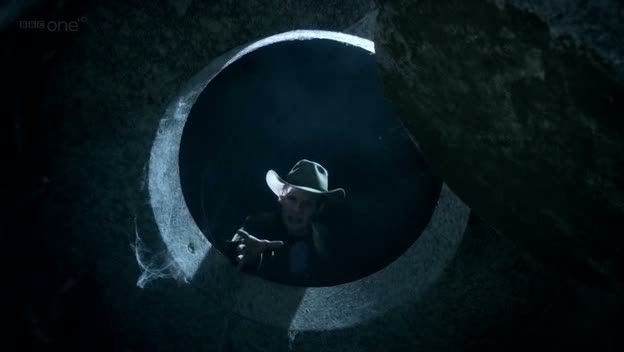
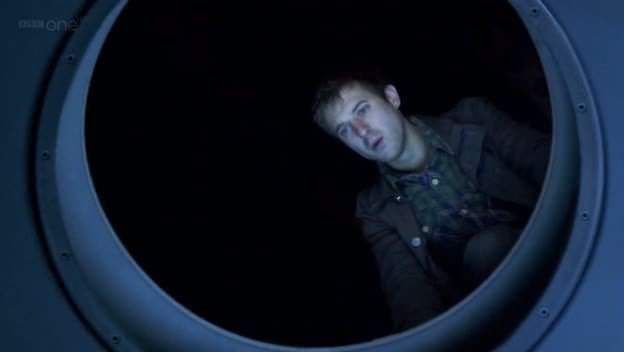
These images resemble each other for good reason. In the first, the Doctor looks down at a pit filled with skulls who eat Gantok alive. In the second, from the God Complex, Rory looks down into Space from the unadorned Faith Complex. Both show us a figure in an eye, a person behind the pupil. The neat thing is that the Doctor is looking at skulls, which is one metaphor for Death, while Rory is looking out at the heavens, another metaphor for Death.
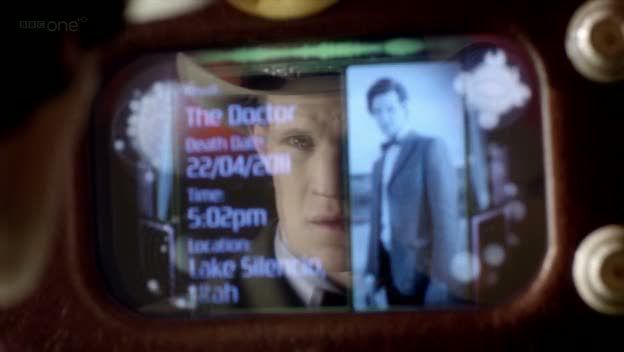
Dorium tells the Doctor about the Silence, about their motivation. It's very Meta. At some point in the future, the Doctor will find himself on the Plains of Transalore (a great name for the crossing of stories, of lore) and he will be in a position where he cannot lie and cannot fail to answer the question put to him: Doctor Who?
Which is the whole purpose of the show, this exploration of the Doctor's identity, which he forges through the balancing of dualities. He, whose name is so old it's nearly forgotten, who has a secret that must be kept for the sake of the (fictional) Universe of Doctor Who, must die in order to maintain the purpose and meaning of the show. Which is a bit of a paradox, 'cause if he's dead then there's no show in the first place. However, given that the paradox of Life and Death being wedded is the whole thrust of the episode, I'm not too concerned with the fairy-tale logic of the situation.
DOCTOR: Suppose there was a man who knew a secret, a terrible dangerous secret that must never be told? How would you erase that secret from the world, destroy it forever, before it can be spoken?
Be-spoken. Nice.
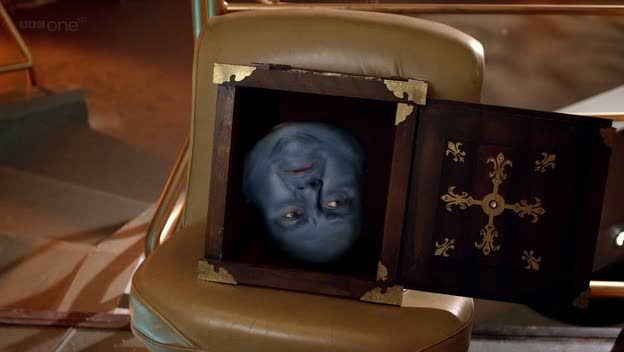
Here's a great image, another in a long line of circles in squares, a blue head surrounded by red velvet. Dorium has asked the Doctor to open his "hatch" and finds himself upside down, on a Chair (symbol for the Throne of God) inside the TARDIS. His box has a cross on it, a Greek cross rather than a Roman one, with a small mirror or pearl in the center. Dorium's been stolen, and has crossed the threshold from a transept of Death to a transept of Space/Time: His world is turned upside down.
Dorium explains that Lake Silencio has been chosen because it's a "still point." This is a nice mirror to the Lady in the Lake shot, a River of Time suspended in still water, nature's mirror. The Doctor's not there yet, though, he's still in denial, knocking about on his farewell tour, but he realizes when he calls the Brig that there isn't always more, that it won't always be going on, that even for him it will stop.
DOCTOR: Time has never laid a glove on me!
But I thought death was a kindness. Perhaps it is. Once the Doctor speaks with the Brig's nurse, he realizes that "it's time." And then the Gunslinger breaks the Fourth Wall and looks right at us.
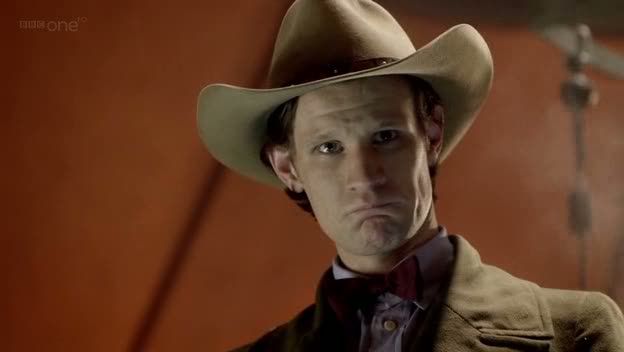
DOCTOR: I had to die. I didn't have to die alone.
I digress.
Yes, it evokes all the wonderful "Live Together, Die Alone" speeches by Doctor Jack Shephard in LOST, but actually I noticed another image spliced in from The Impossible Astronaut:
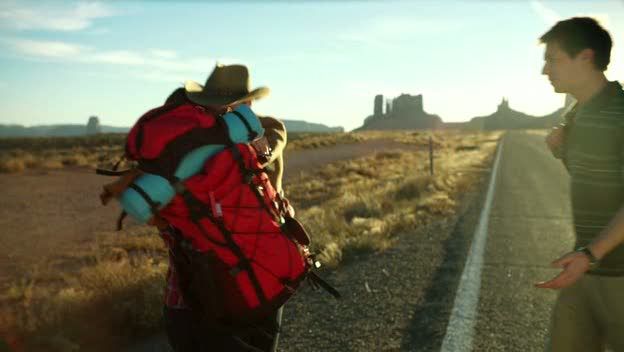
Blue bed roll is a transept to the Red backpack. Okay, back to our regularly scheduled programming. Programming of death!
DOCTOR: If it's time to go, remember what you're leaving. Remember the best.
My friends have always been the best of me.
Remember! Again, we get the juxtaposition of remembering and dying, which has been thematic throughout Eleven's run. In the Ancient Greek myths, the souls of the Dead were ferried across the River, where they would meet the Lord and Lady of the Underworld: Hades, Lord of Desire, who is the husband to and the end of Persephone, Goddess of Change, who is wife to and the end of Hades. The end of desire and the end of change (time) are complementary. They are each others' ends.
As someone who is Dead, you would have a Choice: You could go back to the world of the Living, but to do so you would have to cross the River Lethe, which is the River of Forgetfulness -- those who are reborn as a baby in the world lose their memories of what has gone before. Or, you could choose to stay, to live in death with no regret. These souls do not cross another river -- instead, they are taken to the Pool of Mnemosyne, the Lake of Remembrance. Still water, nature's mirror. Death is a Mirror.
CHURCHILL: And this woman you spoke of, did you invite her?
DOCTOR: Yes, she was there. River Song came twice.
Okay, here's something that's peculiar: When the Doctor relates the story of bringing the family together at Lake Silencio, we are shown a shot of the Lake from Impossible Astronaut, but there's no moon in the sky or on the water. Compare to the original:
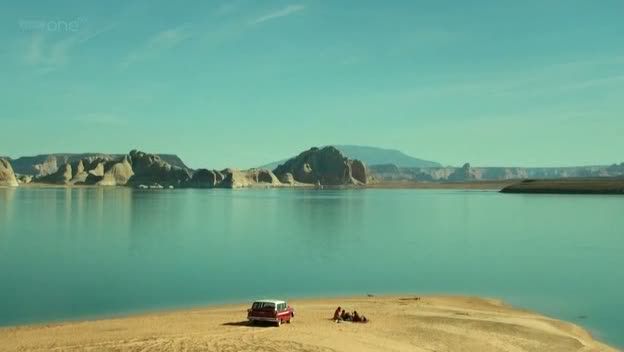

Two different visitations by River, who is twinned in the scene, like the gibbous Moon that was there but isn't there any more. Even the color has changed. Time has been rewritten, and continues to be rewritten. (And a nice double-entendre, because we all like a good joke.)
And I'm sorry, I'm not even half-way done, so this will have to be continued...